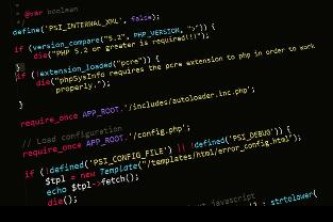** "What Does JSON Mean in English? A Simple Explanation"
When learning programming or working with data, you might often encounter the term "JSON." But what does "JSON" mean in English? And why is it so widely used? In this article, we’ll break down the meaning of JSON, its full form, and its role in modern technology.
What Does "JSON" Stand For in English?
JSON is an acronym for JavaScript Object Notation. Let’s unpack this:
- JavaScript: A popular programming language primarily used for building interactive websites and web applications.
- Object: In programming, an "object" refers to a data structure that stores information in key-value pairs (e.g., a "user" object might have a "name" key with the value "Alice" and an "age" key with the value 30).
- Notation: A system of symbols or rules used to represent data.
In simple terms, JSON is a lightweight, text-based format for structuring data, inspired by JavaScript objects. However, it’s important to note that JSON is language-independent—it can be used with virtually any programming language, not just JavaScript.
Why Is JSON So Popular?
JSON’s popularity stems from its simplicity and versatility. Here are a few key reasons why developers and data professionals rely on it:
-
Easy to Read and Write:
JSON uses a human-readable format with clear syntax, making it straightforward for both humans and machines to parse (process) data. For example:{ "name": "Bob", "age": 25, "isStudent": false, "courses": ["Math", "Science"] }This structure is intuitive: curly braces denote an object, key-value pairs are separated by colons , and commas separate different elements.
-
Lightweight and Fast:
Compared to older formats like XML (eXtensible Markup Language), JSON is more compact and requires less bandwidth, which is crucial for web applications where speed matters. -
Language-Independent:
While JSON originated from JavaScript, it is supported by most programming languages (e.g., Python, Java, C#, PHP) through built-in or external libraries. This makes it a universal choice for data exchange between different systems. -
Supports Complex Data Structures:
JSON can represent various data types, including strings, numbers, booleans (true/false), arrays (ordered lists of values), and nested objects (objects within objects), allowing it to model real-world data flexibly.
Common Use Cases of JSON
JSON is everywhere in modern tech. Here are some typical scenarios where it is used:
- Web APIs: Many web services (e.g., social media platforms, weather apps) use JSON to send and receive data between servers and clients. For instance, when you search for a product on an e-commerce site, the server might return product details in JSON format.
- Configuration Files: Developers often use JSON to store configuration settings for applications, such as database credentials or user preferences.
- Data Storage: NoSQL databases (like MongoDB) use JSON-like formats to store data, as it naturally fits their flexible, document-based structure.
- Mobile Apps: Mobile applications frequently use JSON to communicate with backend servers, ensuring seamless data synchronization between the app and the server.
JSON vs. XML: A Quick Comparison
Before JSON became dominant, XML was the go-to format for data exchange. However, JSON has largely replaced XML in many contexts due to its simplicity:
| Feature | JSON | XML |
|---|---|---|
| Syntax | Lightweight, uses key-value pairs | Verbose, uses tags (e.g., <name>Bob</name>) |
| Readability | Easier for humans to read and write | More complex due to nested tags |
| Data Types | Supports arrays, booleans, numbers, etc. | Requires attributes or additional tags for some data types |
| Parsing Speed | Faster (less overhead) | Slower (due to tag parsing) |
Key Rules of JSON Syntax
To use JSON correctly, it’s important to follow its syntax rules:
- Data is enclosed in (for objects) or
[](for arrays). - Keys must be strings (wrapped in double quotes ).
- Values can be strings, numbers, booleans, arrays, objects, or
null. - Commas separate key-value pairs or array elements, but a trailing comma (e.g.,
"key": "value",) is not allowed in standard JSON.
Conclusion
In summary, JSON (JavaScript Object Notation) is a simple, efficient, and universal format for structuring and exchanging data. Its readability, lightweight nature, and cross-language support have made it an essential tool in web development, APIs, data storage, and more. Whether you’re a beginner learning programming or a seasoned developer working on a complex project, understanding JSON is a valuable skill in today’s tech landscape.
So, the next time you see "JSON," remember: it’s just a friendly, human-readable way to organize data—one that bridges the gap between different systems and makes our digital world run more smoothly.







还没有评论,来说两句吧...